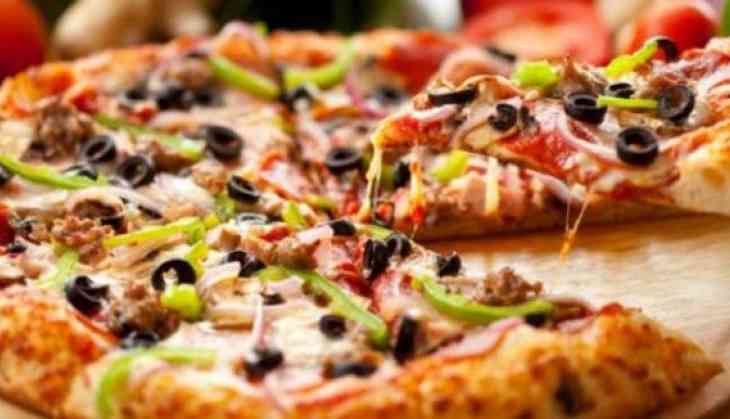
We all know fast food is unhealthy for us as well as our kids. The fact is, we cannot avoid eating junk for all our lives!
If you're a busy parent, chances are you've been in the company of hungry children, desperate to find the nearest place to eat and refuel.
Although fast food can make for a quick and appealing pit stop, meals can be high in calories, sugars and sodium.
But that doesn't mean fast food can't have its place in a child's diet.
"When we look at fast food, it's one meal in the course of a child's day or week. Families need to find that place in the middle where they can fit fast food in reasonable and healthful ways so their children can learn how to fit it into their own lives down the road," said Jill Castle, a registered dietitian and childhood nutrition expert.
Here are tips, tricks and strategies, as noted by CNN, for dining at fast food restaurants with your kids:
-Never leave home without snacks. "If possible, stop at a grocery store or stock up on healthy snacks in advance, such as cut-up fruit, cheese sticks and yogurt, which will cost less than anything on a fast food menu and fill everyone up while they're waiting for their food to be served," said Victoria Stein Feltman, a registered dietitian and co-founder of Apple to Zucchini, a healthy eating resource for parents and families.
-Choose age-appropriate sizes for meals. A kids meal is often a good choice, especially because portions are typically smaller. "Beyond opting out for any super-size options, the regular-sized portions at fast food restaurants tend to be large and too big for kids," said Nicole Silber, a New York-based registered dietitian and pediatric nutritionist.
-Encourage fruit over fries. "Adding fruits, vegetables and dairy foods help to round out the meal and make it balanced," said Castle, who is also the author of "Fearless Feeding: How to Raise Healthy Eaters from High Chair to High School."
-Share a meal with your child. This not only downsizes portions, it helps introduce fast foods to your child, such as a grilled chicken sandwich. Indulgences can be shared, too.
"Parents might also consider sharing less-healthy sides (such as French fries or onion rings) and desserts (such as milkshakes and ice cream sundaes), and supplementing with fresh fruit and vegetables," Feltman said.
-Establish your expectations beforehand. If you don't want your child ordering fries or you want them to have fruit or vegetables, let them know ahead of time.
"A simple thing that parents can do to help their kids make healthy choices is to have a dialogue and ordering plan before going in. This can be done on the drive over to the restaurant. Managing a child's expectations can be half of the battle and can reduce a child's frustration and possible tantrum at the time of ordering," Silber said.
It's also important for parents to think though what can come up in terms of a request. If parents have a problem with some of the options available, they may want to steer clear of the chain in the first place.
"If you're taking your child to a fast food restaurant that serves hamburgers, it's likely your child will be excited to have a hamburger," Castle said. "You need to understand that you are entering into this zone -- and if you are not comfortable with the options, you may need to reconsider going."
-Decide on dessert -- in advance. "Have that decision (about dessert) made before you go so you're not trying to make it on the fly," Castle said.
And if dessert is an option, don't police it. "If dessert is going to be part of the meal, let it be part of the meal -- but don't place eating performance criteria on it ... like 'you have to eat the whole hamburger before you can eat the ice cream.' " Doing this makes the ice cream a much more valuable part of the meal, according to Castle.
-Insist that they sit. "I encourage all families to have their children sit down and eat their meal together," Castle said. "Some of the fast food restaurants have jungle gyms, and kids may choose to run around instead of eating. ... They may grab a fry and go back and forth, but it's important that the parents carve out a rule to have children sit down to eat at a table, with the people who are there with them. They can sit before playing or play first, but at a certain point, they should sit down to eat."
-Teach teens healthy habits. It's true that a teenager can afford more calories than an adult, especially if they are in a growth spurt. Still, encouraging healthy choices among teens can be tricky, since they are often making food decisions on their own.
"Parents can make their teenagers aware of the options so they understand there are more options than a bacon double cheeseburger -- like salads, chicken sandwiches, wraps and rice and grain bowls. But saying 'you should order this when you go' won't necessarily work for a teenager and may create a point of contention and rebellion. Inform them of all of the options and encourage the teen to choose foods that will make them feel energized and healthy."
-Be a good role model. "Parents can influence their kids by making healthy choices themselves and encouraging everyone in the family to do the same, like choosing chicken that is grilled instead of fried and limiting high-calorie and high-sugar condiments such as mayonnaise and ketchup," Feltman said.
In other words, as with most other parenting advice, what you do almost always means more than what you say.
-ANI


